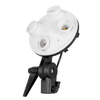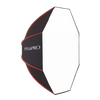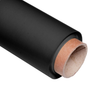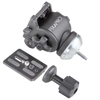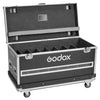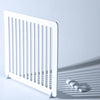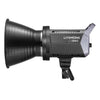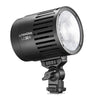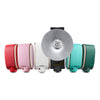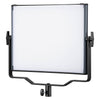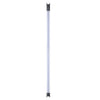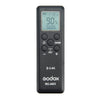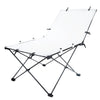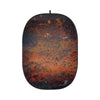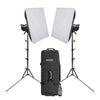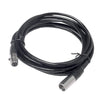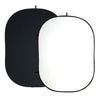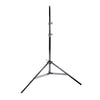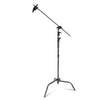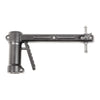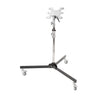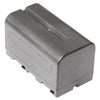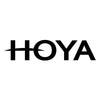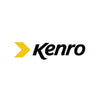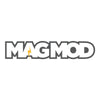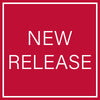ShadowCaster Gobos' - A Product Shot (By Richard Bradbury)
Today I am back with another blog post using the ShadowCaster Gobos from Pixapro.
For this post we will take a look at a shot of coloured wooden stones that I photographed.
Equipment/Settings Used – the what and why
Canon 5DsR
Canon 50mm F1.8 STM
F11 – Final Image Focus Stacked
ISO 100
1/160th
2 x Pixapro Pika 200 (one modified by 21.6” Silver Beauty Dish with Grid)
1x Pixapro CITI 300 Pro plus reflector.
1 x Pixapro ShadowCaster Gobo – Flower
2 x Pieces of coloured card
1x 3m Telescopic Background Bar
1 x 21.6” Silver Beauty Dish with Sock
1 x Pixapro Easy open 120cm Octa – with inner baffle and outer diffuser removed.


I used the 5DsR as I wanted the resolution and detail that camera provides and chose to shoot at a 50mm focal length for the perspective it provides. Not all product shots need to be shot with a macro or a longer lens. Shooting at 50mm also provides me enough DOF at F11 ( on Full Frame) to only need a handful of focus stacked shots. The camera angle was at eye level to the products.
The beauty dish was used as it provided more contrast and harder shadows than a soft box will and it is more specular with it being silver. The grid was used to control the spill of the light on the set as I wanted to light the background separately later with the CITI 300 Pro and a ShadowCaster Gobo.
The Pika 200 Key was set on 1/2+0.3 power for this image and was placed about 2 ft from the stones boomed over set on a C-Stand.


If you need to position lights, cards, reflectors, gobos on a set C-Stands are the way forward, they just work and can also be nested together.


For a fill light I went with the 120cm Easy open Octa to provide a was of fill light on the set with out creating double shadows. It’s plenty large enough to cover the set and provides further contrast control. This had a Pika 200 fitted which was set on 1/8th power and the octa was placed 3ft from set just behind camera.


Now for the flower design ShadowCaster gobo. This was boomed over the set and tilted up from the background slightly to allow me to hit it with light from the CITI 300 Pro which was set to 1/8th + 0.5. I also allowed the edge of the light from the CITI 300 Pro to hit the set a little which highlights the too camera side of the blocks.
Time to look at the lighting setup broken down.
1. Just the Key Light – Pika 200 and 21.6” Silver Beauty Dish + Grid (1/2 + 0.3 Power)
This lights the blue paper and parts of the blocks. The light is placed over head.


2. Just the Fill Light – Pika 200 & 120cm Easy Open Octa with no diffusers fitted. (1/2 + 0.3 Power)
The diffusers were removed to provide a more specular fill than with them fitted.


3. The ShadowCaster light only – CITI 300 Pro with built in reflector. (1/8 + 0.5 Power)
It casts long hard-ish shadows due to the angle of the gobo, the light and its distance )1.4ft from the gobo centre). The CITI 300 is also place horizontal, so it is not hitting the set directly through the gobo. Remember if a subject can see the flash tube it will still cast a shadow or get light.
I also let some of that CITI 300 light spill on to the set, essentially using the feathered edge of it.


4. All three lights combined. Let’s put them all together.
This is not the final image as that has been focus stacked. All 3 lights are firing here.


Below we have a shot without the GOBO shadow. Just the main and fill lights here ( Group A and C).


The ShadowCaster Gobo does a create job of breaking up the darker background and creating more depth and interest in the image. Many many different things can be done with these and I for one am looking forward to working with them further.
The Final Image – Focus Stacked. Well as good as Photoshop can. Better software exists for this work.


You can grab a complete set of individual Gobos from the Pixapro site.
Any comments of questions hit me up in the Facebook Group.
https://www.facebook.com/groups/310037679328494/
Thank you for reading.
Rick
www.rjbradbury.com
Additional Use - Video / Film Industry
Whilst the Shadowcaster Gobos are predominantly designed to be used for e-Commerce and Product Photography, they are also suitable to be used for video purposes. When used with Continuous Lighting, the Gobos are able to create effects and designs that may help to boost a scene or give a shoot some form of emotion. The image below gives an example look at how the Gobos can simulate a slight window light breaking through and landing on a subject, perfect for use on set when natural lighting isn't available.


https://www.rjbradbury.com/




